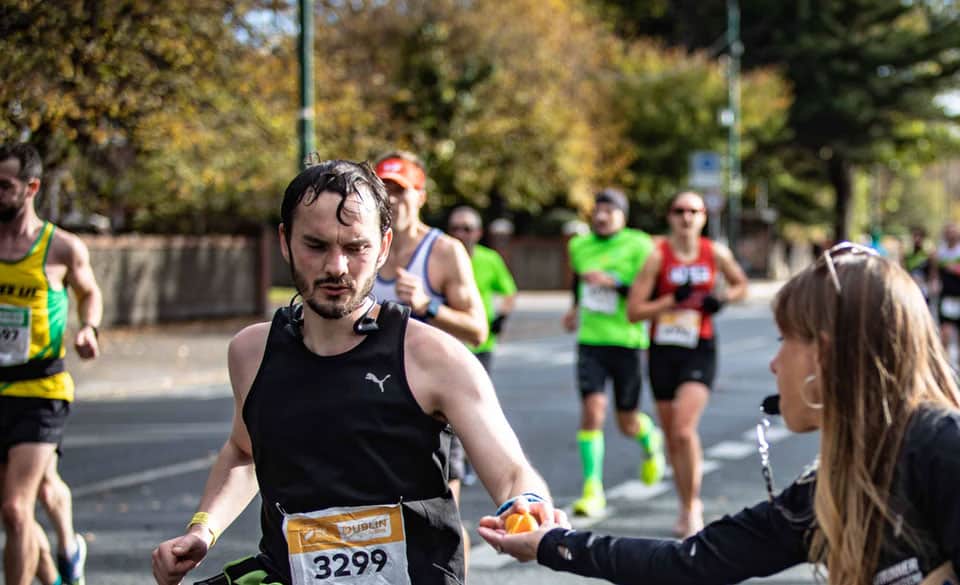
Pace Running – UPDATED 2021 – Guide To Marathon Pace Training
Page Contents
Even for the most seasoned runners, the decision to tackle a marathon is a daunting concept that can make them question their marathon training, stamina, and mental fortitude. If you’ve ever felt this way about tackling a marathon, you aren’t alone.
Running a 26.2 mile course is not for everyone, but completing a marathon doesn’t have to be a daunting task though.
For those runners who pay close attention to pace running, whether competing in a 5K or marathon, pace training can be the key to completing the 26.2-mile endurance test.
Pace Running – Why Is it Important?
As mentioned earlier, your brain plays a vital role in training for a marathon and will need to be “trained” along with the rest of your body. Throughout any given race, the brain is calculating the fastest pace you can maintain while not exposing the body to danger. The brain will use feelings of fatigue and vary electrical output to your muscles to help you control your pace.
This means that the super-eager first-time marathon runner needs to use pace running in a marathon because they will challenge their brain to a battle they won’t win, and performance will suffer.
Excited first-time marathon runners often run on feeling after the opening gun and push through pacing signals from their brains, depleting bodily resources too quickly and slogging their way to the finish line.
Running with pace, especially during the first half of a marathon, is vital to both completing a marathon and protecting your body from a severe depletion of resources or even injury.
Marathon Pace Training – Tips And Tricks
Now that you realize how important pace running is, it is time to establish a pace training routine.
Experienced runners likely already know their ideal pace, but for newcomers discovering a starting point can be difficult. The best place to start is by setting a reasonable and attainable finish time for a marathon. Doing so will give you an appropriate time to start pace training with. But where should you start with pace training?
Most experienced marathon runners and running coaches will tell you that a progression marathon training program is the best way to implement pace training during your preparation period for the marathon.
If you want to finish a marathon you’ll need to work on pace training ahead of time. Successfully completing a marathon is all about how efficiently your body is burning fat over carbs for energy. Running on feeling in the early stages of a marathon burns through energy stores in the body faster. Thus leaving you with no fuel during the critical final miles of the race.
By utilizing pace running you control the efficient use of energy stores in the body. And ensure that the body has the fuel it needs to complete.

Guide To Progression Marathon Training
Progression training helps your body build up endurance and prepare for mental fatigue. Progression programs will vary based upon your individual fitness level and time to race. But most follow the same general schedule. The first few weeks feature a combination of shorter runs (2-3 miles) and one long run each week (5 miles).
As you progress through the running training plan, you add a mile to the distance of your long run each week. The goal is to work your endurance up towards the 26.2 miles of a marathon. By the time you are two weeks out from the marathon your short runs will have reached 6-8 miles in distance with your long run topping out at 20 miles.
Progression training is great for discovering your ideal pace and learning to manage it while staying within its boundaries as you run.
Consider implementing tempo runs into your training. For each progression week you should do a one mile warm up and cool down. The intervening miles should be run in one of three different ways. Traditional tempo, intervals, race-pace tempo.
During your weekly long run throw in some race-pace fartlek’s. This consists of running a 1-5 minute interval at race pace, every 15 minutes of your run. As you prepare for your marathon, consider running a half-marathon at the mid-point of your training. Then a 30K two-thirds of the way through. These efforts can replace your weekly long run and give you experience monitoring and maintaining your pace during a race.
Last but not least, consider enlisting the assistance of a pace partner during your marathon training. Pace training is as much mental as it is physical. It is easy, especially on longer runs, to encounter boredom and lose focus on your pace training. Running with a partner gives you someone to physically keep pace with.
Additionally, having a running partner will provide you with a vital physical indicator of your pace. If you can carry on a conversation with your training partner while running, you aren’t pushing your body too far and are likely maintaining a good pace. If, however, you cannot hold that conversation you are likely running too fast and not controlling pace.


Download Running the Mile for only 8usd
“A Know-all Short Report All About Long Distance Running”



